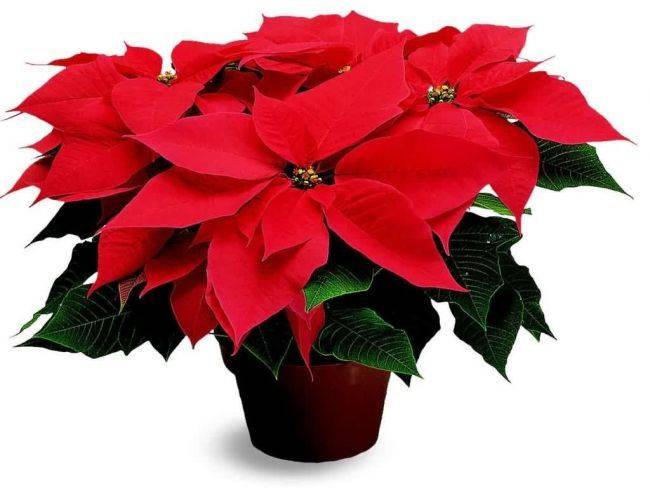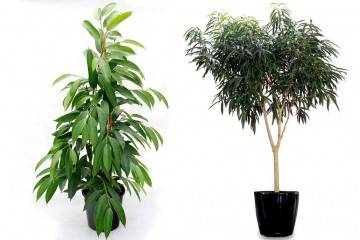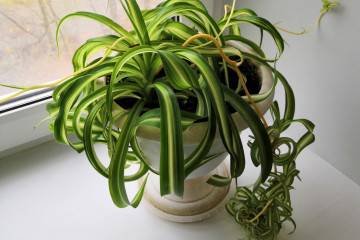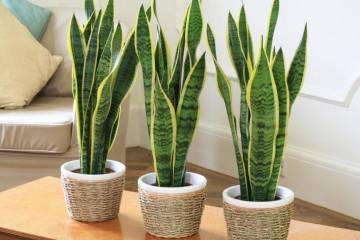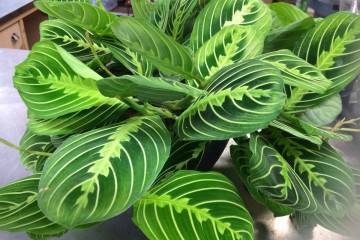Poinsettia flower - home care
Content:
Poinsettia is an ornamental culture that belongs to the category of indoor plants. The height of the bushes reaches 35-40 cm. In winter, flowers appear on the plant, the bracts of which are painted in bright red shades. In order for the poinsettia to please with lush flowering, it is recommended to follow the rules of plant care. Below is the basic information on growing milkweed (the second name for poinsettia).
Description and popular varieties
Ornamental culture belongs to the category of evergreen shrubs. Under natural conditions, the height of the bushes can reach 400 cm.When growing crops at home, the bushes grow up to only 40 cm.
The elliptical-shaped leaf plates are dark green in color. The edge of the foliage is jagged. The length reaches 12-15 cm. The rosette inflorescences consist of small flowers of a pale yellow palette.
The most popular varieties of milkweed include:
- The finest poinsettia is a kind of decorative culture that is grown indoors. The main difference between the Most Beautiful variety is the presence of red bracts. Red poinsettia will effectively decorate any interior. However, it should be borne in mind that poison is part of its milky juice;
- Oak Leaf is a type of milkweed with carved leaf plates. Bracts of a popular variety are colored in scarlet shades;
- Cortez Pink - poinsettia with pale pink flowers. The variety is unpretentious. When it begins to bloom, the bush stands out favorably among other indoor plants. If desired, you can propagate the variety by cuttings;
- Premium Miro is a terry milkweed with voluminous crumpled bracts, colored in a milky and pink palette.
- Winter Rose White is a spurge, characterized by white embossed bracts that can brighten gloomy winter days.
Healing properties
Poinsettia is often used in folk medicine. The milky juice of an ornamental culture is used to eliminate pain in the ears and teeth. It can also help speed up the healing process.
Poinsettia: home care
Observing the basic recommendations regarding the care of an ornamental culture, you can achieve a lush flowering of milkweed, which will delight you on cold winter evenings.
Lighting and location selection
When choosing a place for flower pots, you should give preference to rooms with bright diffused lighting. In the summer, flowerpots with plants should be taken out on the balcony or placed near the porch. The room in which flowers grow must be systematically ventilated. Plants are not afraid of drafts. On cloudy days, it is recommended to arrange additional lighting for the flowers.
Temperature regime
Experienced growers recommend maintaining the temperature in the room where the spurge is grown, within 18-25 ° C. The temperature must not be allowed to drop to 14 ° C.
Watering
Poinsettia is a flower that needs frequent and abundant watering. When the topsoil dries out, it is important to immediately moisten the soil. In the spring and summer, the bushes should be watered every day. In the cold season, the soil is moistened every 3 days. For irrigation, warm filtered or settled rainwater is used.
Humidity
In a room in which tubs with perennial crops are displayed, the humidity level should be in the range of 50-60%. Too dry air becomes the cause of pest infestations. High humidity can provoke rotting of the root system. Proper care of the poinsettia will avoid the occurrence of various problems.
Top dressing
How to care for red poinsettia at home? In addition to systematic airing and moisturizing, euphorbia needs additional fertilizing 2 times a week. It should be borne in mind that during the dormant period, fertilization is often not worth it. In the spring and autumn months, mineral fertilizers and a weak mullein solution are perfect as top dressing.
Features of care during the rest period
The dormant period lasts, as a rule, from mid-spring to the end of May. At this time, it is recommended to prune the stems, leaving only 10-12 cm in length from the ground surface. The pots are exposed in a cooler room, where the temperature reaches 15-16 ° C. The amount of watering is minimized while the crop is still not starting to wake up.
Pruning
Pruning is recommended 2 times a year. The first procedure is carried out in mid-spring, when the plant goes into a dormant state. The bushes are shortened in such a way that their height does not exceed 10-15 cm from the soil surface. The second pruning should be done after replanting the bushes. The procedure makes it possible to form spectacular bushes, and remove weak stems without regret.
Bloom
Poinsettia is a flower in the house that can decorate any interior and improve the mood of its owner during the flowering period. The flowers of the decorative culture are small. The presence of leaf rosettes located in the center of the stems around the inflorescences gives the milkweed a special charm. Leaf rosettes are painted in:
- white and pink;
- lilac;
- cream;
- bright red shades.
Reproduction of poinsettia
Euphorbia can be propagated by seed and cuttings. Below you can familiarize yourself with the step-by-step process of propagating poinsettia (Christmas star) by cuttings.
- In June or mid-July, you should start harvesting cuttings in order to propagate the bushes. The length of the shoots should reach 7-10 cm. There should be about 4-5 buds on the cuttings.
- The area of the slices is processed under the nodal part.
- The blanks for propagation are lowered into warm water with the cut down. After 5 minutes. being in water, you can achieve complete removal of toxic substances from the cuttings.
- The cut zones are treated with a growth activator. Cuttings are planted in pre-prepared containers filled with dry manure, humus and sand.
- Pots with cuttings are covered with film material and taken out into a room dimly lit by sunlight, the temperature in which reaches 28-29 ° C.
- Every 2 days, the film is removed for airing, and the soil is moistened with a spray bottle.
- A month later, the cuttings take root. The containers are moved to a cooler room. Closer to autumn, you can transplant rooted cuttings in different pots. After 12 months, you should expect the first flowering.
Transfer
The poinsettia Christmas flower needs replanting every year, which must be done in late spring. After pruning, the flower pots are taken out into a warm room well-lit by the sun's rays. During this period, the soil is moistened with slightly warm filtered water. As soon as leaf plates begin to form on the shoots, the perennial should be transplanted into a larger container. Flower pots are rearranged in a room, the temperature in which is in the range of 21-22 ° C.
After transplanting, the bushes need daily abundant watering and spraying. After the young shoots begin to form, it is recommended to leave the 6 strongest branches. Weak shoots are removed without regret.
Possible growing problems and diseases
If you grow euphorbia, ignoring the recommendations of specialists regarding care, various problems may arise that will negatively affect the appearance of the culture, or even lead to the death of the flower. Below you can familiarize yourself with the main problems that flower growers face in the process of growing a perennial.
- The leaf plates begin to turn yellow and fall off. Indoor flowers suffer from a similar problem most often in winter. The main reason is drafts.
- Blanching of inflorescences. Why is there such an unpleasant situation? An excess of moisture can cause the flowers to change color.
- Falling leaves and inflorescences often occurs in the summer against the background of decay of the root system due to waterlogging of the soil.
- The extreme part of the foliage turns red or yellow. The problem arises in the case of too dry air in the room in which the pots are located. Foliage can turn red in just 1 day of being in inappropriate conditions.
- A sharp drop in leaf plates occurs when growing crops in a too cold room.
- Lack of flowering. The reason for this problem lies in the violation of perennial agricultural technology.
Pests
The following pests can attack the bushes of the Christmas flower:
- thrips;
- shield;
- whitefly;
- spider mites.
To cope with insects, it will be necessary to treat green spaces with insecticidal agents as soon as possible. You can also use traditional methods to eliminate parasites.
Diseases
Perennial crops are susceptible to fusarium and powdery mildew. To cope with diseases, treatment should be carried out quickly or with foundation, phytosporin-M or topaz.
Signs and superstitions
Various signs and superstitions are associated with poinsettia. It is believed that by putting flower pots on the table on a holiday, you can bring harmony and happiness to the family. Having presented such a beautiful plant to a person for a holiday, you can maintain friendly relations with him for many years. Negative omens and superstitions are not associated with milkweed.
Poinsettia is a gorgeous plant that needs proper care. If you cut the bushes in a timely manner, moisten the soil and apply top dressing correctly, you can achieve abundant flowering, which will delight the grower on cold winter days. Pruned shoots can be used for rooting to keep them from disappearing. Breeding euphorbia, following the recommendations of experts, is quite simple.

